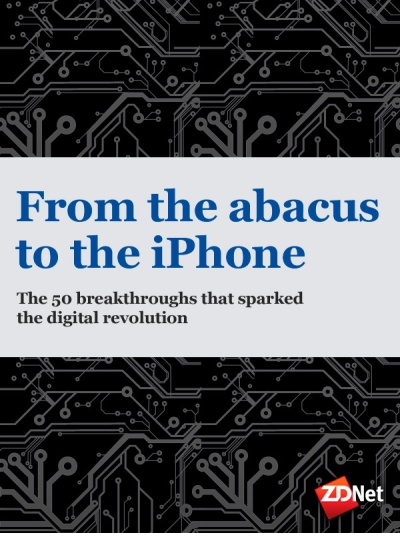When was the first app? Try 19th century France

From the abacus to the iPhone: What were the 50 breakthroughs that sparked the digital revolution?

From the abacus to the iPhone: The 50 breakthroughs that sparked the digital revolution is available nowImage: CBSi
Ever wondered how we got from the abacus to accessing the world's information on a pocket-sized computer?
A new ebook, written by silicon.com's Nick Heath - From the abacus to the iPhone: The 50 breakthroughs that sparked the digital revolution - explores the inventions and insights that underpin the modern information age.
Below is an extract from the ebook, available to download for Kindle now (priced £2.56). This extract details an invention from the 19th century, when a French master weaver devised a way of programming machines.
Jacquard Loom - 1801
One of the defining characteristics of a computer is its versatility - the fact that it is just as happy running Angry Birds as it is delivering your email. This flexibility relies on computers being programmable, general-purpose machines - having the ability to alter what they do based on the instructions given to them.
One of the first demonstrations of programming a machine originated in the French textile industry at the turn of the 19th century.
Looking for a way to simplify the tedious and laborious process of weaving fabric, Frenchman Joseph-Marie Jacquard hit on the idea of automating it and created the Jacquard Loom - a loom that could be programmed to produce different patterns.
The loom was programmed using punched cards that were strung together and passed through a mechanical reader. Wooden plungers inside the reader were pushed against the cards and set the loom weaving different patterns based on whether the plungers passed through holes in the cards or not.
Later on in the 19th century, English inventor and computing pioneer Charles Babbage would borrow the idea of using punched cards to program his Analytical Engine, and early computers of the 20th century would also rely on punched card and tape to input programs and data. Today, Jacquard Looms are controlled by programmable computers.
To read more about the 50 breakthroughs that led to the computing age download the full Kindle ebook here.